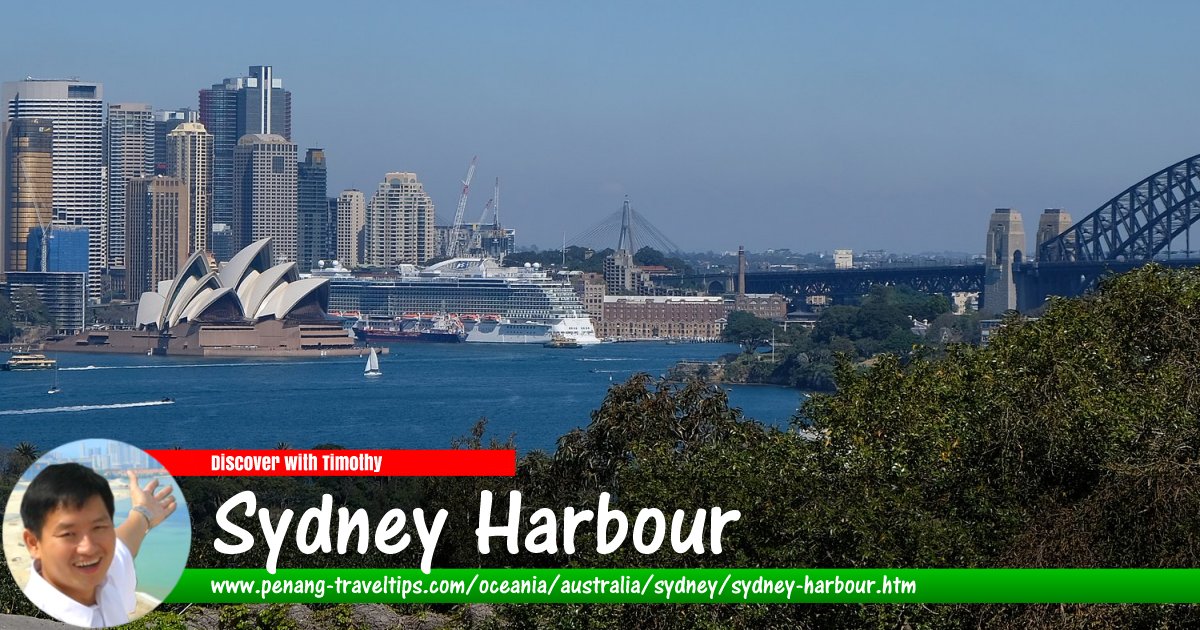 Sydney Harbour
Sydney HarbourFin 22, CC BY-SA 4.0, via Wikimedia Commons
Sydney Harbour (GPS: -33.85549, 151.21206) is the natural harbour of Sydney. It is also known as Port Jackson. The harbour is the location of the Sydney Harbour Bridge and Sydney Opera House, two of the world famous icons of the city. It is the location of the annual New Year's Eve Fireworks display and the starting point of the Sydney to Hobart yacht race.
The area around Sydney Harbour was inhabited by Aboriginal tribes such as the Gadigal, Cammeraygal, Eora and Wangal people when the first Europeans arrived. Captain James Cook (then lieutenant) was the first European to enter Sydney Harbour, in 1770. He named it Port Jackson after the Lord Commissioner of the British Admiralty and Judge Advocate of the Fleet, Sir George Jackson.
Eighteen years after Cook's arrival, Governor Arthur Philips took a boat to Port Jackson from Botany Bay on 21 January 1788. He came to shore at Sydney Cove and Manly Cove, camped overnight and then returning to Botany Bay on 24 January. On 26 January he returned on board the Supply to establish the first colony in Australia which grew to become the city of Sydney.
Sydney Harbour measures 19 km in length and covers 55 sq km. It is a drowned river valley holding 562 million cubic meters. There are several islands within the harbour.
Sydney Harbour is  on the Map of Sydney, Australia
on the Map of Sydney, Australia
Back to Discover Sydney
 Latest updates on Penang Travel Tips
Latest updates on Penang Travel Tips
About this website

Thanks for reading this page. My name is Timothy Tye. My hobby is to research information about places, and share the information with people on this website. I started this website on 5 January 2003, and since then, have written about over 20,000 places, mostly in Malaysia and Singapore.
Please use the information on this page as guidance only. While I try my best to provide you information that is as accurate as I can get it to be, I do apologize for any errors. Also, as I might not be able to update some information on time, some of these pages may contain outdated information.
Copyright © 2003-2024 Timothy Tye. All Rights Reserved.


 Go Back
Go Back